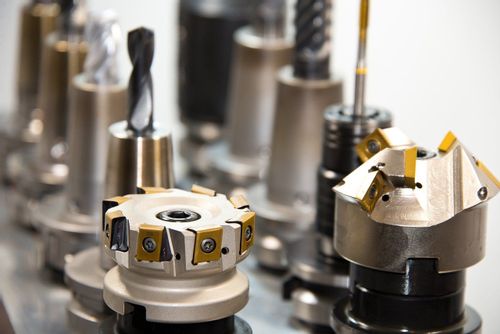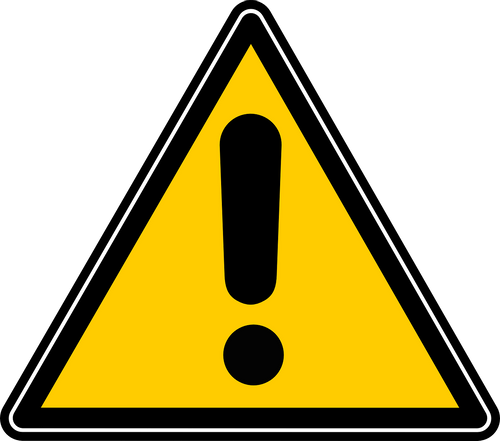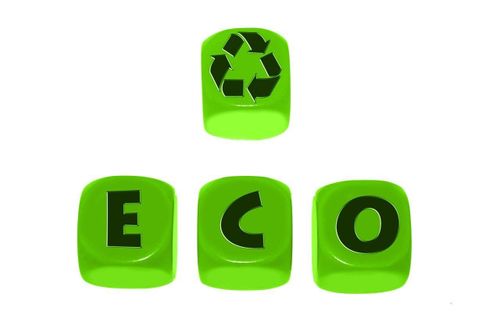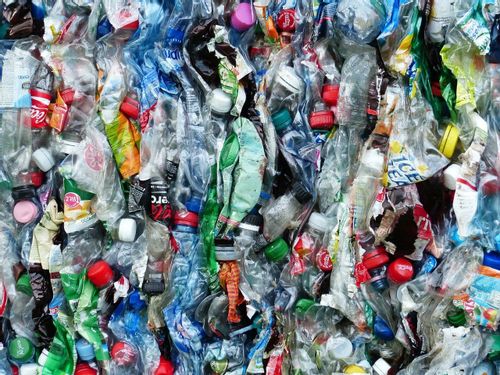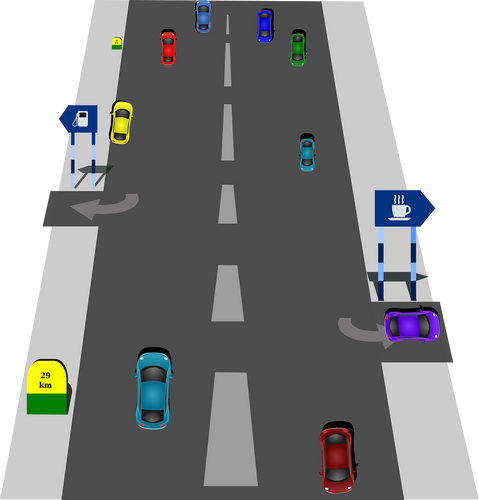Standards Packages
iTeh together with SIST has developed and compiled a comprehensive collection of standard packages to support your standard requirements. Our packages cover an array of content that includes quality management, risk management, road vehicles, machine safety, and much more. With over 200 packages to choose from, you are sure to find a collection to suit your standard needs.
Latest Standards
This document specifies methods and metrics for assessing the accuracy and precision of 3D scanned data for use in 3D printing, throughout the full 3D printing lifecycle. This document focuses mainly on 3D scanned data from computed tomography. Computed tomography can acquire information concerning the internal structures, regional density, orientation and/or alignment of scanning objects, as well as their shape and appearance. This document is applicable to the assessment of image-based modelling, segmentation, and 3D models. This document is not intended to assess the 3D printed product itself.
- Standard24 pagesEnglish languagesale 15% off
- Draft24 pagesEnglish languagesale 15% off
- Draft24 pagesEnglish languagesale 15% off
This document sets out principles and procedures for testing the bias of test samples of coals or cokes, taken according to the ISO 13909 series.
- Standard26 pagesEnglish languagesale 15% off
- Draft26 pagesEnglish languagesale 15% off
- Draft26 pagesEnglish languagesale 15% off
This document gives requirements and guidance on security controls and implementation for third-party payment service providers (TPPSPs). This document deals with the overall security controls of TPPSPs from developing and testing to installing, operating and auditing the system. These security controls consist of: — security governance controls; — cross-functional controls; — function-specific controls.
- Standard24 pagesEnglish languagesale 15% off
- Draft24 pagesEnglish languagesale 15% off
- Draft24 pagesEnglish languagesale 15% off
The present document specifies the abstract syntax of the Test Description Language (TDL) in the form of a meta-model based on the OMG ® Meta Object Facility™ (MOF) [1]. It also specifies the semantics of the individual elements of the TDL meta-model. The intended use of the present document is to serve as the basis for the development of TDL concrete syntaxes aimed at TDL users and to enable TDL tools such as documentation generators, specification analysers and code generators.
The specification of concrete syntaxes for TDL is outside the scope of the present document. However, for illustrative purposes, an example of a possible textual syntax together with its application on some existing ETSI test descriptions are provided.
NOTE: OMG®, UML ®, OCL™ and UTP™ are the trademarks of OMG (Object Management Group). This
information is given for the convenience of users of the present document and does not constitute an
endorsement by ETSI of the products named
- Standard108 pagesEnglish languagesale 15% off
- Standard108 pagesEnglish languagesale 15% off
- Standardization document108 pagesEnglish languagesale 10% offe-Library read for1 day
This document applies to the determination of beta emitters activity concentration using liquid scintillation counting. The method requires the preparation of a scintillation source, which is obtained by mixing the test sample and a scintillation cocktail. The test sample can be liquid (aqueous or organic), or solid (particles or filter or planchet).
NOTE Planchet are samples, described in 8.5, out of solid material e.g. small metal, plastic or glass pans or support material made of these materials
This document describes the conditions for measuring the activity concentration of beta emitter radionuclides by liquid scintillation counting[2].
The choice of the test method using liquid scintillation counting involves the consideration of the potential presence of other beta-, alpha- and gamma emitter radionuclides in the test sample. In this case, a specific sample treatment by separation or extraction is implemented to isolate the radionuclide of interest in order to avoid any interference with other beta-, alpha- and gamma-emitting radionuclides during the counting phase.
This document is applicable to all types of liquid samples having an activity concentration ranging from about 1 Bq·l−1 to 106 Bq·l−1. For a liquid test sample, it is possible to dilute liquid test samples in order to obtain a solution having an activity compatible with the measuring instrument. For solid samples, the activity of the prepared scintillation source shall be compatible with the measuring instrument.
The measurement range is related to the test method used: nature of test portion, preparation of the scintillator - test portion mixture, measuring assembly as well as to the presence of the co-existing activities due to interfering radionuclides.
Test portion preparations (such as distillation for 3H measurement, or benzene synthesis for 14C measurement, etc.) are outside the scope of this document and are described in specific test methods using liquid scintillation[3][[4][5][6][7][8][9][10].
- Standard31 pagesEnglish languagesale 10% offe-Library read for1 day
This document defines terms used in the field of soil quality.
- Standard78 pagesEnglish languagesale 10% offe-Library read for1 day
This document specifies the conditions for determination of the axial tensile properties of ceramic matrix composite (CMC) tubes with continuous fibre-reinforcement at elevated temperature in air, vacuum and inert gas atmospheres. The applicability of this document is specific to tubular geometries because fibre architecture and specimen geometry factors in composite tubes are distinctly different from those in flat specimens.
This document provides information on the axial tensile properties and stress-strain response in temperature, such as axial tensile strength, axial tensile strain at failure and elastic constants. The information can be used for material development, control of manufacturing (quality insurance), material comparison, characterization, reliability and design data generation for tubular components.
This document addresses, but is not restricted to, various suggested test piece fabrication methods. This document is primarily applicable to ceramic matrix composite tubes with a continuous fibrous-reinforcement: unidirectional (1D, filament winding and tape lay-up), bi-directional (2D, braid and weave) and multi-directional (xD, with x > 2), tested along the tube axis.
- Standard34 pagesEnglish languagesale 10% offe-Library read for1 day
This document is applicable to lead-acid batteries with a nominal voltage of 12 V, used primarily as power source for the starting of internal combustion engines (ICE), lighting and also for auxiliary equipment of ICE vehicles. These batteries are commonly called "starter batteries". Batteries with a nominal voltage of 6 V are also included in the scope of this document. All referenced voltages need to be divided by two for 6 V batteries. The batteries under the scope of this document are used for micro-cycle applications in vehicles which can also be called Start-Stop (or Stop-Start, idling-stop system, micro-hybrid or idle-stop-and-go) applications. In cars with this special capability, the internal combustion engine is switched off during a complete vehicle stop, during idling with low speed or during idling without the need of supporting the vehicle movement by the internal combustion engine. During the phases in which the engine is switched off, most of the electric and electronic components of the car need to be supplied by the battery without support of the alternator. In addition, in most cases an additional regenerative braking (recuperation or regeneration of braking energy) function is installed. The batteries under these applications are stressed in a completely different way compared to classical starter batteries. Aside of these additional properties, those batteries need to crank the ICE and support the lighting and also auxiliary functions in a standard operating mode with support of the alternator when the internal combustion engine is switched on. All batteries under this scope need to fulfil basic functions, which are tested under application of EN 50342 1:2015.
This document is applicable to batteries for the following purposes:
- Lead-acid batteries of the dimensions according to EN 50342 2 for vehicles with the capability to automatically switch off the ICE during vehicle operation either in standstill or moving (“Start-Stop”);
- Lead-acid batteries of the dimensions according to EN 50342 2 for vehicles with Start-Stop applications with the capability to recover braking energy or energy from other sources.
This document is not applicable to batteries for purposes other than mentioned above, but it is applicable to EFB delivered in dry-charged conditions according to EN 50342 1:2015, Clause 7.
NOTE The applicability of this document also for batteries according to EN 50342 4 is under consideration.
- Standard29 pagesEnglish languagesale 10% offe-Library read for1 day
This document specifies requirements for the protective provisions relating to electrical safety in fixed installations associated with AC and/or DC traction systems and to any installations that can be endangered by the electric traction power supply system. This also includes requirements applicable to vehicles on electrified lines. It also applies to all aspects of fixed installations which are necessary to ensure electrical safety during maintenance work within electric traction power supply systems.
This document applies to new electric traction power supply systems and major revisions to electric traction power supply systems for:
a) railways;
b) guided mass transport systems such as 1) tramways,
2) elevated and underground railways,
3) mountain railways,
4) trolleybus systems,
5) electric traction power supply systems for road vehicles, which use an overhead contact line system, and
6) magnetically levitated systems, which use a contact line system;
c) material transportation systems.
This document does not apply to:
a) electric traction power supply systems in underground mines,
b) cranes, transportable platforms and similar transportation equipment on rails, temporary structures (e.g. exhibition
structures) in so far as these are not supplied directly or via transformers from the contact line system and are not
endangered by the electric traction power supply system,
c) suspended cable cars,
d) funicular railways,
e) existing vehicles.
This document does not specify working rules for maintenance. The requirements within this document related to protection against electric shock are applicable to persons only.
- Amendment13 pagesEnglish languagesale 10% offe-Library read for1 day
This document specifies requirements for protective provisions against the effects of stray currents, which result from the operation of DC electric traction power supply systems.
As several decades' experience has not shown evident corrosion effects from AC electric traction power supply systems, this document only deals with stray currents flowing from a DC electric traction power supply system.
This document applies to all metallic fixed installations which form part of the traction system, and also to any other metallic components located in any position in the earth, which can carry stray currents resulting from the operation of the railway system.
This document applies to all new DC lines and to all major revisions to existing DC lines. The principles can also be applied to existing electrified transportation systems where it is necessary to consider the effects of stray currents.
This document does not specify working rules for maintenance but provides design requirements to allow maintenance. The range of application includes:
a) railways,
b) guided mass transport systems such as:
1) tramways,
2) elevated and underground railways,
3) mountain railways,
4) magnetically levitated systems, which use a contact line system, and
5) trolleybus systems,
c) material transportation systems.
This document does not apply to
a) electric traction power supply systems in underground mines,
b) cranes, transportable platforms and similar transportation equipment on rails, temporary structures (e.g. exhibition structures) in so far as these are not supplied directly from the contact line system and are not endangered by the electric traction power supply system,
c) suspended cable cars,
d) funicular railways.
- Amendment10 pagesEnglish languagesale 10% offe-Library read for1 day
This document specifies requirements for enhanced visibility equipment in the form of garments, or devices, which are capable of visually signalling the user’s presence.
The enhanced visibility equipment is intended to provide conspicuity of the wearer in medium risk situations under any daylight conditions and/or under illumination by vehicles headlights or searchlights in the dark.
Performance requirements are included for colour and retroreflection as well as for the minimum areas and for the placement of the materials in protective equipment.
This document is not applicable to:
- high visibility equipment in high-risk situations, which is covered in EN ISO 20471 (for further information concerning risk situations, see Annex A);
- visibility equipment specifically intended for the head, hands and feet, e.g. helmets, gloves and shoes;
- equipment integrating active lighting, e.g. LEDs;
- visibility for low-risk situations.
- Standard32 pagesEnglish languagesale 10% offe-Library read for1 day
This document gives guidelines for the choice of non-destructive testing (NDT) methods for welds in metals and for the evaluation of the results for quality control purposes, based on quality requirements, material, weld thickness, welding process and extent of testing.
This document also specifies general rules and standards to be applied to the different types of testing, for the selection of the method, the techniques and the acceptance levels.
Acceptance levels cannot be a direct interpretation of the quality levels defined in ISO 5817 or ISO 10042. They are linked to the overall quality of the produced batch of welds.
The requirements specified in this document for acceptance levels for NDT conform with quality levels stated in ISO 5817 or ISO 10042 (moderate, intermediate, stringent) only on a general basis and not in detail for each indication.
Annex A gives correlations between quality levels, testing levels and acceptance levels for specific testing techniques.
Annex B gives an overview on specific testing techniques of standards linked to quality levels, acceptance levels and testing methods.
- Standard24 pagesEnglish languagesale 10% offe-Library read for1 day
This document specifies a test method for determining the mechanical viscoelastic properties of interlayer materials. The interlayers under examination are those used in the production of laminated glass or laminated safety glass. The shear characteristics of interlayers are needed to design laminated glass in accordance with EN 16612:2019 and EN 19100 (all parts).
Parameters of the Prony series, widely used in numerical simulation, can be derived from the measurements in Annex C.
- Standard34 pagesEnglish languagesale 10% offe-Library read for1 day
This document provides procedures for monitoring the dose to the skin, the extremities, and the lens of the eye. It gives guidance on how to decide if such dosemeters are needed and to ensure that individual monitoring is appropriate to the nature of the exposure, taking practical considerations into account. This document specifies procedures for individual monitoring of radiation exposure of the skin of the body, extremities (skin of the hands, fingers, wrists, forearms including elbow, lower leg including patella, feet and ankles), and lens of the eye in planned exposure situations. It covers practices which involve a risk of exposure to photons in the range of 8 keV to 10 MeV, electrons and positrons in the range of 0,07 MeV to 1,2 MeV mean beta energies being equivalent to 0,22 MeV and 3,6 MeV beta maximum energy - in accordance to the ISO 6980 series, and neutrons in the range of thermal to 20 MeV. This document gives guidance for the design of a monitoring programme to ensure compliance with legal individual dose limits. It refers to the appropriate operational dose quantities, and it gives guidance on the type and frequency of individual monitoring and the type and positioning of the dosemeter. Finally, different approaches to assess and analyse skin, extremity, and lens of the eye doses are given. It is not in the scope of this document to consider exposure due to alpha radiation fields. NOTE 1 The requirements for the monitoring of the occupational exposure may be given in national regulations. NOTE 2 Dose to the lens of the eye due to intake of tritium is not in the scope of this document. Moreover, the situation of the workers that work in contaminated atmosphere and can have alpha and/or radon eye lens dose is also not in the scope.
- Standard35 pagesEnglish languagesale 15% off
- Standard38 pagesFrench languagesale 15% off
- Draft35 pagesEnglish languagesale 15% off
- Draft35 pagesEnglish languagesale 15% off
- Draft40 pagesFrench languagesale 15% off
This document specifies requirements for the measurement of preheating temperature, interpass temperature and preheat maintenance temperature for fusion welding. This document can also be applied as appropriate in the case of other welding processes. This document does not apply to the measurement of post weld heat treatment temperatures.
- Standard4 pagesEnglish languagesale 15% off
- Standard5 pagesFrench languagesale 15% off
- Draft4 pagesEnglish languagesale 15% off
- Draft4 pagesEnglish languagesale 15% off
- Draft6 pagesFrench languagesale 15% off
This document specifies a procedure for the determination of fluorine in copper and zinc sulfide concentrates by sodium hydroxide fusion and fluoride ion selective electrode (FISE) detection. Fluoride ions are leached from the sodium hydroxide fusion and presented to the FISE. Potential interfering ions are masked by the use of a complexing agent and control of solution pH. If the aluminium content in the concentrate is up to a mass fraction of 4,5 %, there is no effect of aluminium in this method. However, if the aluminium content in the concentrate exceeds a mass fraction of 4,5 %, there is a possibility that it can affect the analytical results. The method is applicable to fluorine in the following ranges: — copper concentrates: mass fraction of 0,008 % to 0,3 %; — zinc concentrates: mass fraction of 0,005 % to 0,1 %. The results of the trueness test can be found in Annex C.
- Standard18 pagesEnglish languagesale 15% off
- Draft19 pagesEnglish languagesale 15% off
- Draft19 pagesEnglish languagesale 15% off
This document specifies a reference method for the determination of volatile organic compound (VOC) emissions into indoor air from floor covering adhesives and products used for flooring installation. This method is used to determine volatile organic compounds, semi-volatile organic compounds, and volatile aldehydes. It is based on the use of a test chamber and subsequent analysis of an air sample for organic compounds by GC-MS respectively HPLC. The main purpose of the test procedure is to obtain relevant performance data for the classification of flooring adhesives and products used for the installation of floor coverings with respect to low VOC emissions during the use phase of the flooring.
- Standard7 pagesEnglish languagesale 15% off
- Draft7 pagesEnglish languagesale 15% off
- Draft7 pagesEnglish languagesale 15% off
This document specifies general requirements for basic chemicals and raw materials of basic chemicals resulting from chemical recycling of organic materials. This document does not provide specific requirements for materials covered by other ISO technical committees.
- Standard5 pagesEnglish languagesale 15% off
- Draft5 pagesEnglish languagesale 15% off
- Draft5 pagesEnglish languagesale 15% off
This document specifies approved algorithms for the encipherment of personal identification numbers (PINs).
- Standard13 pagesEnglish languagesale 15% off
- Draft13 pagesEnglish languagesale 15% off
- Draft13 pagesEnglish languagesale 15% off
This document defines terms used in conjunction with, and the general principles of, test methods for determining the laser-induced damage threshold and for the assurance of optical laser components subjected to laser radiation.
- Standard32 pagesEnglish languagesale 15% off
- Standard36 pagesFrench languagesale 15% off
- Draft32 pagesEnglish languagesale 15% off
- Draft32 pagesEnglish languagesale 15% off
- Draft38 pagesFrench languagesale 15% off
Benefits

Full Standards Solution
Our catalog includes not only latest standards but also full meta information about related standardization project lifecycle.

Cost Effective
Our PRICE MATCH GUARANTEE policy with multi-level volume discounts gives our clients the best option in the market. In addition, you can get access to the standards for 3, 10, or 30 days.

Stay Notified
Get alerted to the latest revisions and new standards in the Weekly Newsletter. Standards are constantly changing. Don’t miss a revision that can impact your business.
About Us
iTeh Inc is a software development and IT consulting team of professionals who provide consulting, development and implementation of solutions for all types of businesses.
In cooperation, with the Slovenian Institute of Standardization (SIST), we create a unique solution that covers all aspects of the lifecycle of Standardization organizations. iTeh Standards is a part of the solution that helps SIST to provide and sell their products to Customers.
iTeh Standards Store is an evolving project, our goal is to build long-term relationships with our customers. We believe in delivering quality services to solve our customers' challenges and define success by exceeding our customers' expectations. We are always ready to listen and our experience allows us to provide our customers with helpful effective suggestions. You can contact us by email.
We are committed to providing the best possible experience for our customers.
Compliance with international standards is increasingly becoming one of the key competitive advantages in the global market. Our company creates all conditions for the most comfortable implementation of new documents and norms in the processes carried out by your organization. Some of the key advantages of working with us are:
- Cost-effective - multi-level discounts and permanent updates of the functions give our clients the best option on the market.
- e-Library - access to standards for a period of time of your choice. It is a cost-effective solution for keeping updated with the newest standards.
- Company-wide documents - create a company account and connect all employees with access to purchased standards, e-Library documents, and packages.
- All in one spot - all purchased standards are kept in one place with controlled access by the account administrator.
- Client-centric - providing quality consulting is the prerogative and incentive to create new products that accompany your success and scale.
- 24 / 7 client support
We are dedicated to building mutually beneficial and long-term relationships with our clients. That is why our team focuses on creating services to help our customers develop and achieve new productive results.










